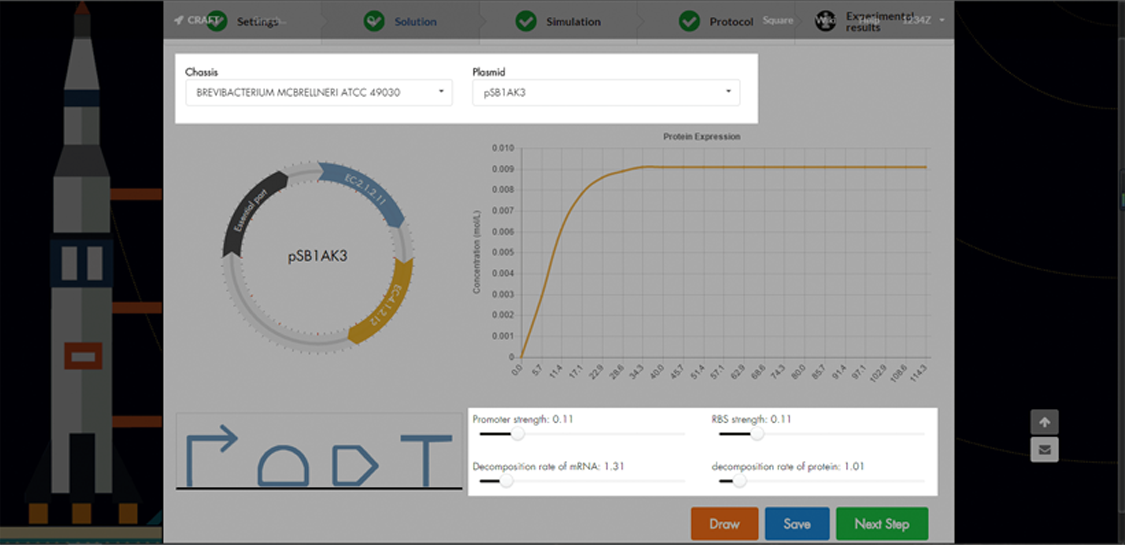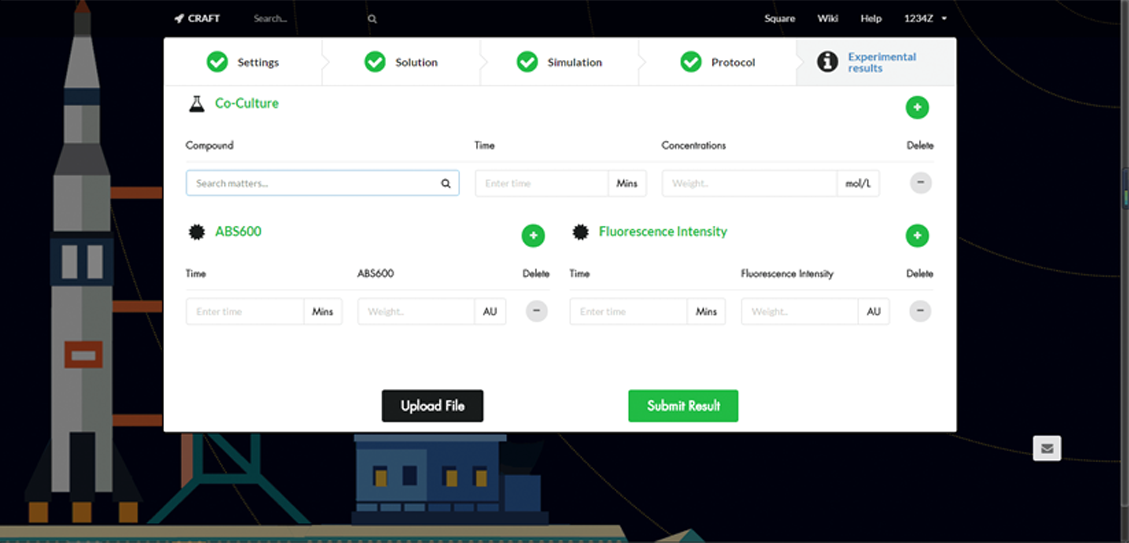
CRAFT DESIGNER:
Selection in silicon
In engineering, two principles, “Bottom top” and “Top down”,
have been frequently used when design, which mean design from
details to the whole and enrich details from a work frame. How-
ever, separately using these two principle in synthetic biology is
ineffective because “Bottom top” need designers have thorough
cognition of their target objects, while “Top down” is usually
overwhelmed by complex details in biological system.
“Living organisms have evolved to maximize their chances for
survival”
To our surprise, evolution have combined this two principles
perfectly, with using “Bottom up” in biology variation, generating
nearly all solutions for survival, and using “Top down”, when
facing natural selection, to delete those irrational solutions based
on fitness, making sure the organism have most chances for sur-
vival.
Referring to the natural evolution, CRAFT Designer was
emerged, and in the following, we will illustrate how CRAFT De-
signer was designed following evolution and what other functions
the users will experience.

Craft Customize Synthetic Biological System
Users can input multiple targets and set a series of restrictions on them. We also require users to select
where they want to set their system and what bacterium have existed in that place. Enumerating all possible
solution, simulating the biology variation, CRAFT Designer will generate a large amount of solution systems
at the back-end, and filtered with restrictions, simulating the natural selection, the most appropriate systems
will be remained and showed to the users.


Automatically Generate the Regulatory Elements
Based on the restrictions, every solution systems will contain a series of expression elements recom-
mended by CRAFT Designer, including promoter and RBS. Users can freely change these elements by drag-
ging the bar to change the strength of elements, and our software will estimate suitable elements to re-
place previous ones. Users can also examine the circuits in different strains of bacterium, and choose other
plasmid backbone.


Simulation
Life activity of the synthetic biological system can be shown in one chart with curves.


Standard Protocol
“Design and Redesign” is a consideration in synthetic biology based on standardization parts. Different
protocols also have somewhere in common, which means we can apply “Design and Redesign” in protocol
generation: abstract the common part of protocols as standard protocol frame and fill them with specific
designed system messages.


Standard and Scalable Experiment Feedback
We design a standard data frame for experiment data feedback, corresponding to previous protocol.
This data frame can receive experiment data in any size.


CRAFT Square
Divergent evolution in silicon
Gene and character will change when a specie stay in different
environment or ecological niche. Most of these changes occurred
on previous genetic basis.
This is how CRAFT Square was designed: a user’s system
might be referred by other users, which means the system have
entered into a new environment, and the others will modify this
system to fulfill their requirements, simulating the divergent evo-
lution.
We will demonstrate more details in CRAFT Square in the
following.

Share and Evaluation
Users can choose whether they want to share their design with others on CRAFT Square. Other
users can scan the shared designs and evaluate them. All evaluation will be collected and designs with
high score rank higher.



Save Duplication
Users can choose one design on CRAFT Square and save it. They can modify this design by changing
input and strength of regulatory elements, uploading data etc.. After users modifying existed synthetic bio-
logical systems, these systems will suit for another “environment” and keep their advantages.


Collaboration
Users can upload their design to the helping list on CRAFT Square and ask for help. Others can assis-
ant those who seek help with sharing computation load or finish validation experiment.


Satellite:
Responsible for Calculation
Since the calculation in CRAFT will occupy large
segment of computing resources if settle all calculation
missions on web server, we developed this distributed
computing plug-in Satellite. Users can download this
plug-in to their personal computer and receive
computing missions from CRAFT Square according to
the number of every design. Satellite thus provides
another way for commucation and collaboration between users.




